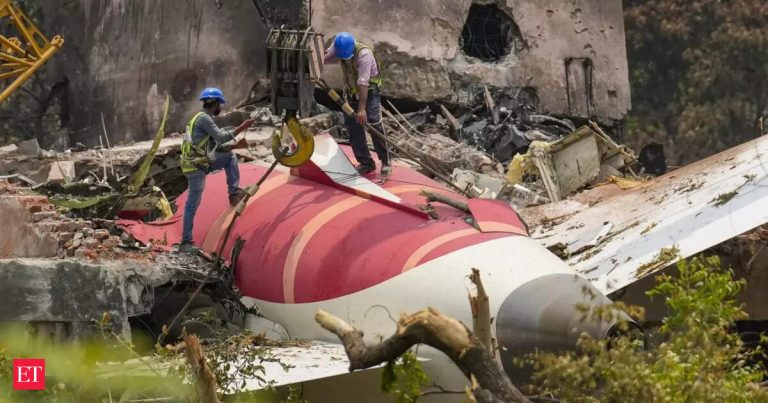The Rise of AI-Generated Misinformation in the Aftermath of the Air India Crash
The tragic crash of an Air India Boeing 787 in Ahmedabad, which claimed the lives of 275 people, has been compounded by a disturbing wave of AI-generated misinformation. Days after the incident, a fabricated preliminary investigation report, convincingly crafted using aviation jargon and details from a different incident, circulated widely online. This fraudulent document, created by an AI platform, fooled news outlets and even some aviation professionals, highlighting the alarming potential of AI to generate deceptive content that can easily spread during times of heightened public anxiety.
The spread of false information wasn’t limited to the fake report. Social media became awash with AI-generated images and videos purporting to depict the crash aftermath, further muddying the waters and adding to the emotional distress of those affected. This wave of misinformation included a fraudulent fundraising campaign, exploiting the tragedy for financial gain. The incident underscores the dangers of emotionally driven financial fraud, often originating from untraceable sources, which preys on public sympathy during crises.
Experts warn of a disturbing trend of malicious actors using AI and social media to disseminate misinformation and perpetrate fraud during sensitive events. Amit Relan, CEO of digital fraud detection firm mFilterIt, notes the Air India crash as a prime example of this, emphasizing the need for public education to discern genuine content from manipulated material. Collaborative efforts between social media platforms, law-enforcement agencies, and technology providers are also crucial to combat this growing threat.
The International Civil Aviation Organization (ICAO) stresses the importance of effective communication with the media during such crises to ensure accuracy and maintain public trust. A well-planned communication strategy is essential to minimize negative publicity and ensure the timely dissemination of factual information. In this instance, the Indian government’s delayed response in refuting the fake report and the scarcity of official updates inadvertently created a vacuum filled by misinformation.
The Aircraft Accident Investigation Bureau (AAIB) eventually extracted data from the flight recorders, but the delay of over a week in transferring them to the New Delhi lab raised concerns. Aviation safety experts advocate for a paradigm shift in information dissemination. John Cox, a former airline pilot and aviation safety consultant, emphasizes the need for daily briefings by the AAIB, following the practice of agencies worldwide, to prevent misinformation from filling the void created by a lack of official updates.
The Air India crash incident highlights the challenges posed by AI-generated misinformation in disaster situations. The ease with which AI can create convincing fake content, coupled with the rapid spread of information on social media, presents a potent threat. Fact-checking organizations like BOOM identified several AI-generated images related to the crash, exposing the deceptive ease with which synthetic content can be generated and circulated without disclaimers about its fabricated nature. The incident emphasizes the critical need for multi-pronged solutions, including media literacy education, improved detection tools, and increased platform accountability in tackling misinformation. As new disasters unfortunately provide fertile ground for misinformation campaigns, a proactive approach is essential to mitigate the damaging effects of AI-powered fake news.


